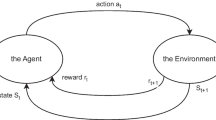Abstract
With the increasing prevalence of microservice technology, the architectural flexibility and scalability of software systems have witnessed notable advancements. However, this progress has also brought about a challenge in meeting the frequent changes in user requirements, thereby adversely affecting the quality of the system. It is crucial for microservice systems to undergo evolution through the modification of system configurations to adapt to changing requirements, and various methods for system evolution have been proposed. However, the evolution schemes generated by these methods vary in terms of the degree of improvement in quality and the cost required for evolution, such as time and money, i.e., different evolution effect and evolution cost. Considering the above, it is necessary to predict effect and cost before applying these schemes to real systems. Existing physical methods possess drawbacks such as high expenses and time-consuming setup procedures. Conversely, simulation methods, which are based on mathematical models, necessitate certain simplifications, resulting in disparities between the outcomes and the actual results. To overcome these challenges, this paper introduces a prediction method for microservice system evolution. By employing Graph Neural Network techniques to learn from historical data, this method enables precise prediction of the effects and costs associated with various microservice evolution schemes. And based on the above algorithm, an online prediction system is implemented, independent of the microservice system for long-term prediction. Experimental results validate the accuracy and robustness of the proposed prediction method.
Access this chapter
Tax calculation will be finalised at checkout
Purchases are for personal use only
Similar content being viewed by others
References
Aslanpour, M.S., Toosi, A.N., Taheri, J., Gaire, R.: AutoScalesim: a simulation toolkit for auto-scaling web applications in clouds. Simul. Model. Pract. Theory 108, 102245 (2021)
Calheiros, R.N., Ranjan, R., Beloglazov, A., De Rose, C.A., Buyya, R.: CloudSim: a toolkit for modeling and simulation of cloud computing environments and evaluation of resource provisioning algorithms. Softw. Pract. Exp. 41(1), 23–50 (2011)
Courageux-Sudan, C., Orgerie, A.C., Quinson, M.: Automated performance prediction of microservice applications using simulation. In: 2021 29th International Symposium on Modeling, Analysis, and Simulation of Computer and Telecommunication Systems (MASCOTS), pp. 1–8. IEEE (2021)
Deng, S., et al.: Optimal application deployment in resource constrained distributed edges. IEEE Trans. Mob. Comput. 20(5), 1907–1923 (2020)
Hamilton, W., Ying, Z., Leskovec, J.: Inductive representation learning on large graphs. Adv. Neural. Inf. Process. Syst. 30, 1–11 (2017)
He, X., Tu, Z., Wagner, M., Xu, X., Wang, Z.: Online deployment algorithms for microservice systems with complex dependencies. IEEE Trans. Cloud Comput. 11, 1746–1763 (2022)
He, X., et al.: Rescureservice: a benchmark microservice system for the research of mobile edge and cloud computing. arXiv preprint arXiv:2212.11758 (2022)
Kephart, J.O., Chess, D.M.: The vision of autonomic computing. Computer 36(1), 41–50 (2003)
Kipf, T.N., Welling, M.: Semi-supervised classification with graph convolutional networks. arXiv preprint arXiv:1609.02907 (2016)
Luo, X., Wu, H., Yuan, H., Zhou, M.: Temporal pattern-aware QoS prediction via biased non-negative latent factorization of tensors. IEEE Trans. Cybern. 50(5), 1798–1809 (2019)
Mahmud, R., Pallewatta, S., Goudarzi, M., Buyya, R.: iFogSim2: An extended iFogSim simulator for mobility, clustering, and microservice management in edge and fog computing environments. J. Syst. Softw. 190, 111351 (2022)
Ren, X., et al.: DeepQSC: a GNN and attention mechanism-based framework for QoS-aware service composition. In: 2021 International Conference on Service Science (ICSS), pp. 76–83. IEEE (2021)
Stine, M.: Migrating to Cloud-native Application Architectures. O’Reilly Media (2015)
Velickovic, P., Cucurull, G., Casanova, A., Romero, A., Lio, P., Bengio, Y., et al.: Graph attention networks. STAT 1050(20), 10–48550 (2017)
Wang, S., Zhao, Y., Huang, L., Xu, J., Hsu, C.H.: Qos prediction for service recommendations in mobile edge computing. J. Parallel Distrib. Comput. 127, 134–144 (2019)
Wang, Z., He, X., Liu, L., Tu, Z., Xu, H.: Survey on requirement-driven microservice system evolution. In: 2020 IEEE International Conference on Services Computing (SCC), pp. 186–193. IEEE (2020)
Xiang, Z., Deng, S., Jiang, F., Gao, H., Tehari, J., Yin, J.: Computing power allocation and traffic scheduling for edge service provisioning. In: 2020 IEEE International Conference on Web Services (ICWS), pp. 394–403. IEEE (2020)
Zou, G., Chen, J., He, Q., Li, K.C., Zhang, B., Gan, Y.: NDMF: Neighborhood-integrated deep matrix factorization for service QoS prediction. IEEE Trans. Netw. Serv. Manage. 17(4), 2717–2730 (2020)
Acknowledgements
Research in this paper is supported by the National Key Research and Development Program of China (2022ZD0115404) and the National Natural Science Foundation of China (62372140, 61832014, 61832004).
Author information
Authors and Affiliations
Corresponding author
Editor information
Editors and Affiliations
Rights and permissions
Copyright information
© 2023 The Author(s), under exclusive license to Springer Nature Switzerland AG
About this paper
Cite this paper
He, X., Shao, Z., Wang, T., Shi, H., Chen, Y., Wang, Z. (2023). Predicting Effect and Cost of Microservice System Evolution Using Graph Neural Network. In: Monti, F., Rinderle-Ma, S., Ruiz Cortés, A., Zheng, Z., Mecella, M. (eds) Service-Oriented Computing. ICSOC 2023. Lecture Notes in Computer Science, vol 14419. Springer, Cham. https://doi.org/10.1007/978-3-031-48421-6_8
Download citation
DOI: https://doi.org/10.1007/978-3-031-48421-6_8
Published:
Publisher Name: Springer, Cham
Print ISBN: 978-3-031-48420-9
Online ISBN: 978-3-031-48421-6
eBook Packages: Computer ScienceComputer Science (R0)




